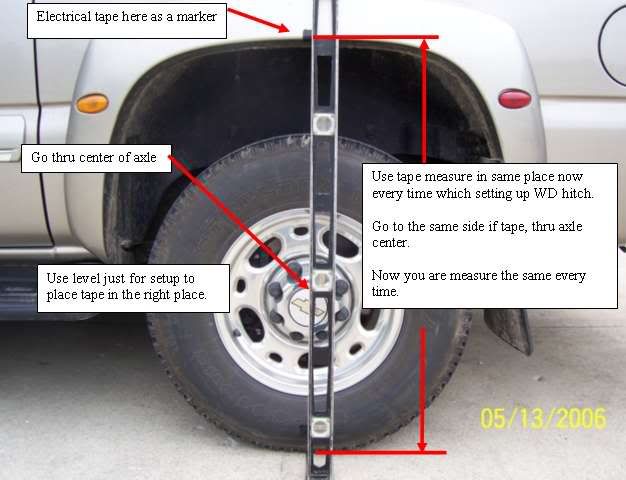Forum Discussion
JBarca
Mar 07, 2017Nomad II
bbells wrote:
This did not happen before I 'tightened' the WDH more. I setup the WDH so the differences between the front and rear height of my Toyota Tundra are about equal to what they were without the trailer. I went from my previous 3 links unused to 5 links unused.
I am checking the pressure with both my Tire Minders and a hand psi tester. I am checking the temperature with both a laser and the Tire Minders.
Hi bbells,
I agree a 20psi rise is not right. You said you took lazer temps during these hi pressure events, do you have info on what psi lined up with what degree temp? In order for raw pressure to get that big, there needs to be a corresponding temp to go with it.
Your statement in blue up top, what principal of WD setting are you trying to accomplish with that procedure? To make this simpler so we can follow what you did, do you have fender heights as measured at the center of front and rear axle with the truck hitched and then unhitched? We can see by the numbers what you have going on with the WD.
Measured like this through the center of the axle

I tried to look up a Tundra owners manual but do not know what year and what cab configuration you have. Some of the older ones had a receiver limit of 750# when using a WD hitch. And some forum members have reported they bent the receiver trying to get WD setup.
You said you used 2 more links on the chains on this new setup. That is a lot more WD. Or the receiver is flexing too much. What size WD bars do you have and which brand WD hitch is it? While we are at it, what model and year camper?
Heavy WD settings can add more weight to the front axle of the camper. It does not always spread out to the rear evenly. But, the amount of air pressure rise is well, extreme for just added front axle weight. There may be more then one issue going on at the same time.
Hope this helps
John
About RV Tips & Tricks
Looking for advice before your next adventure? Look no further.25,178 PostsLatest Activity: Dec 22, 2025